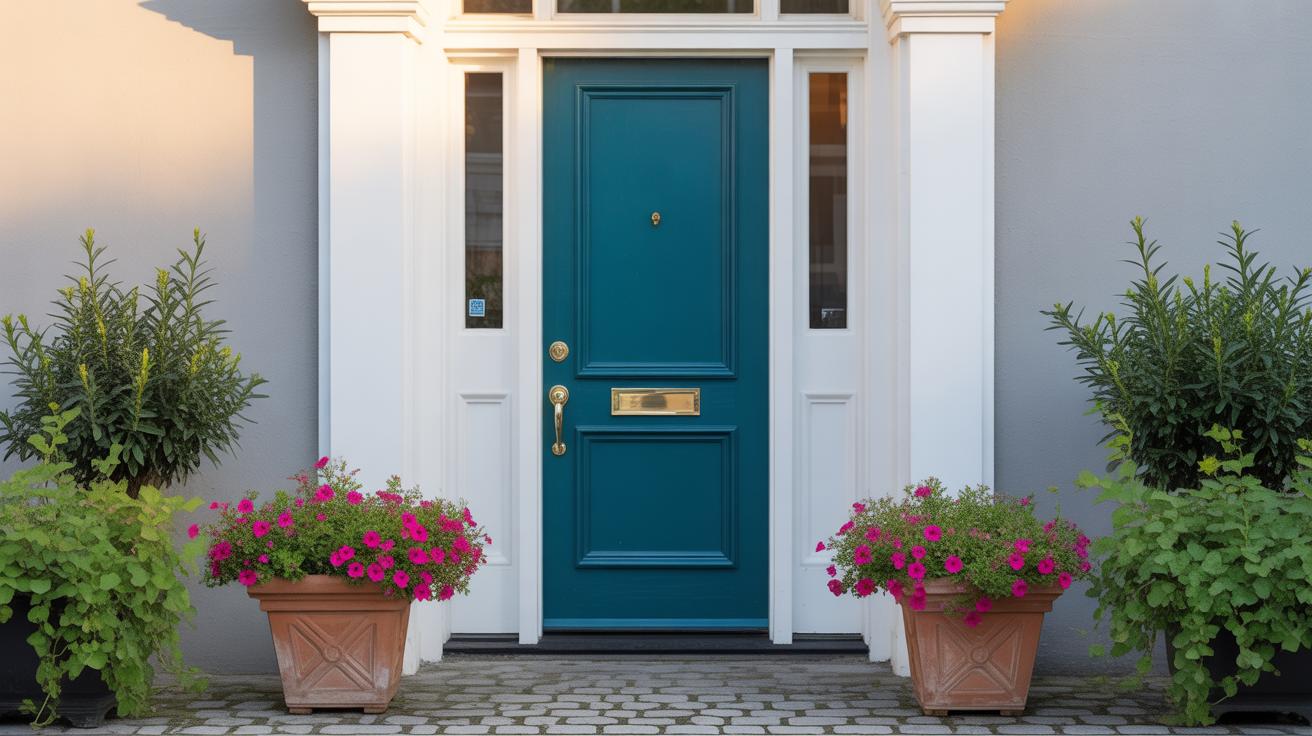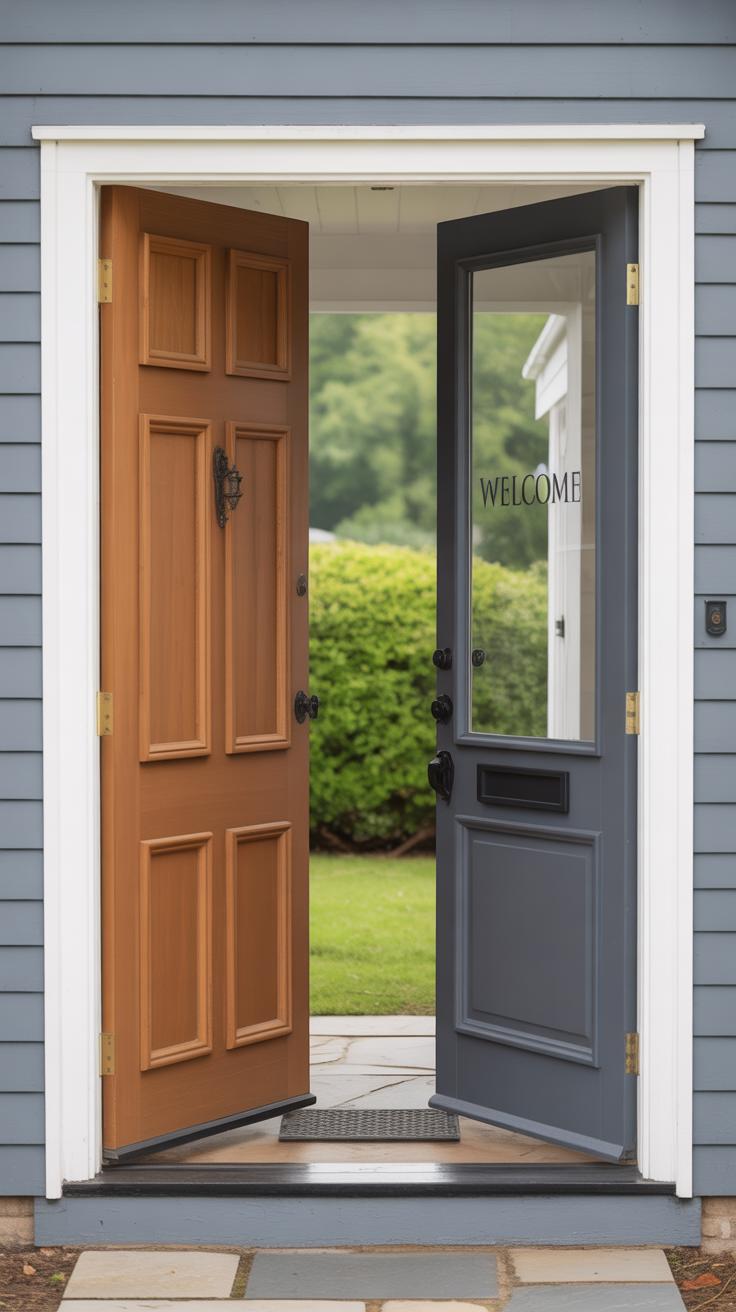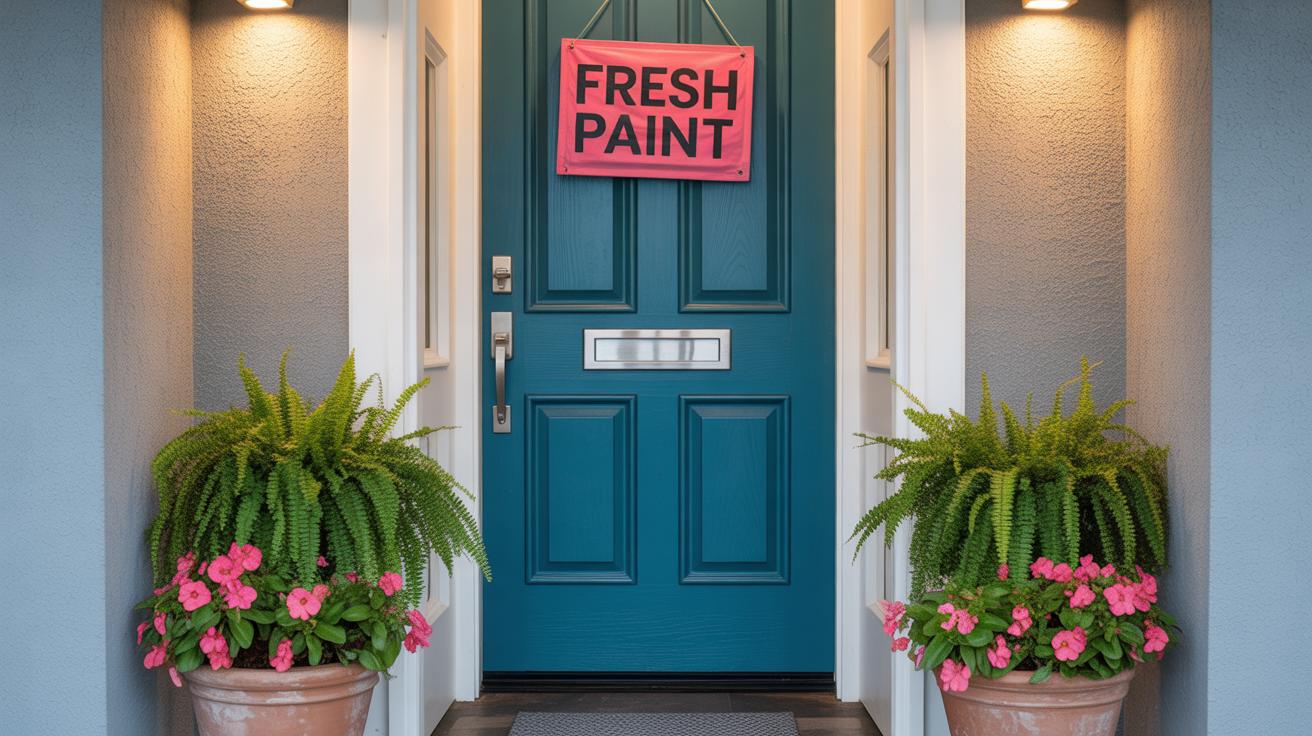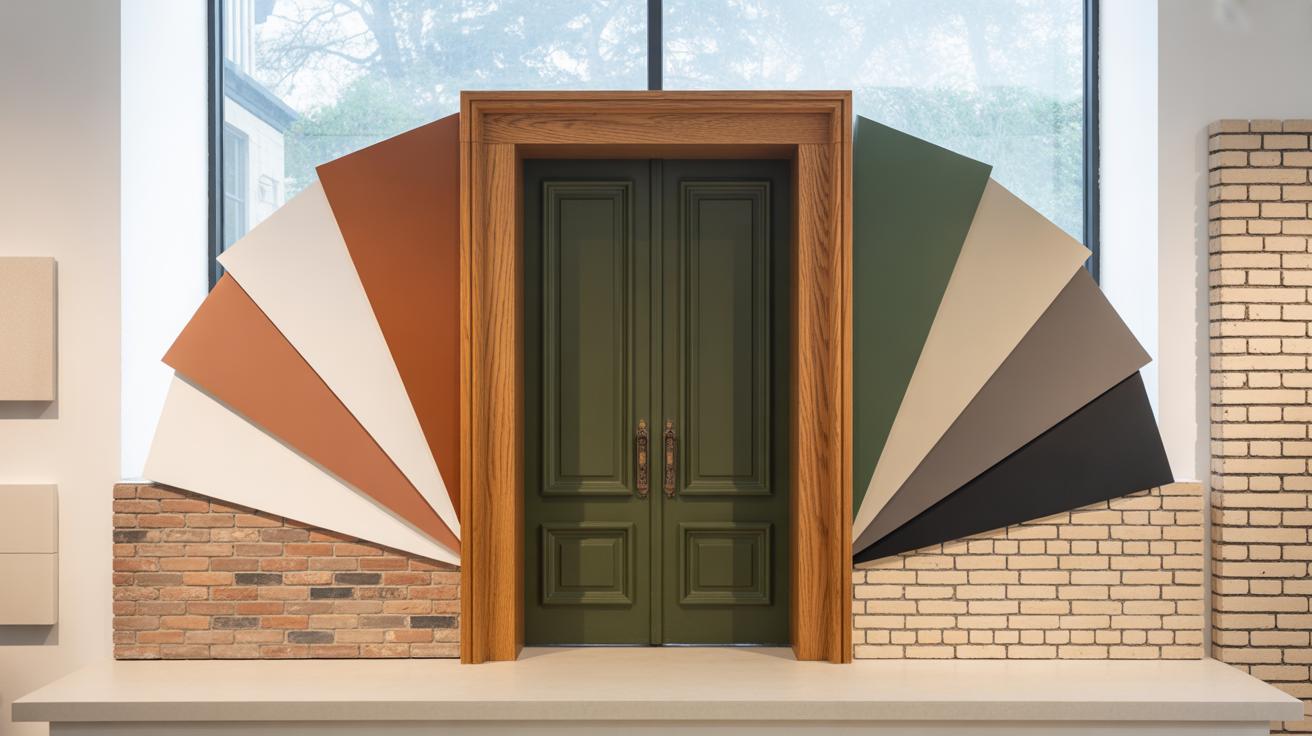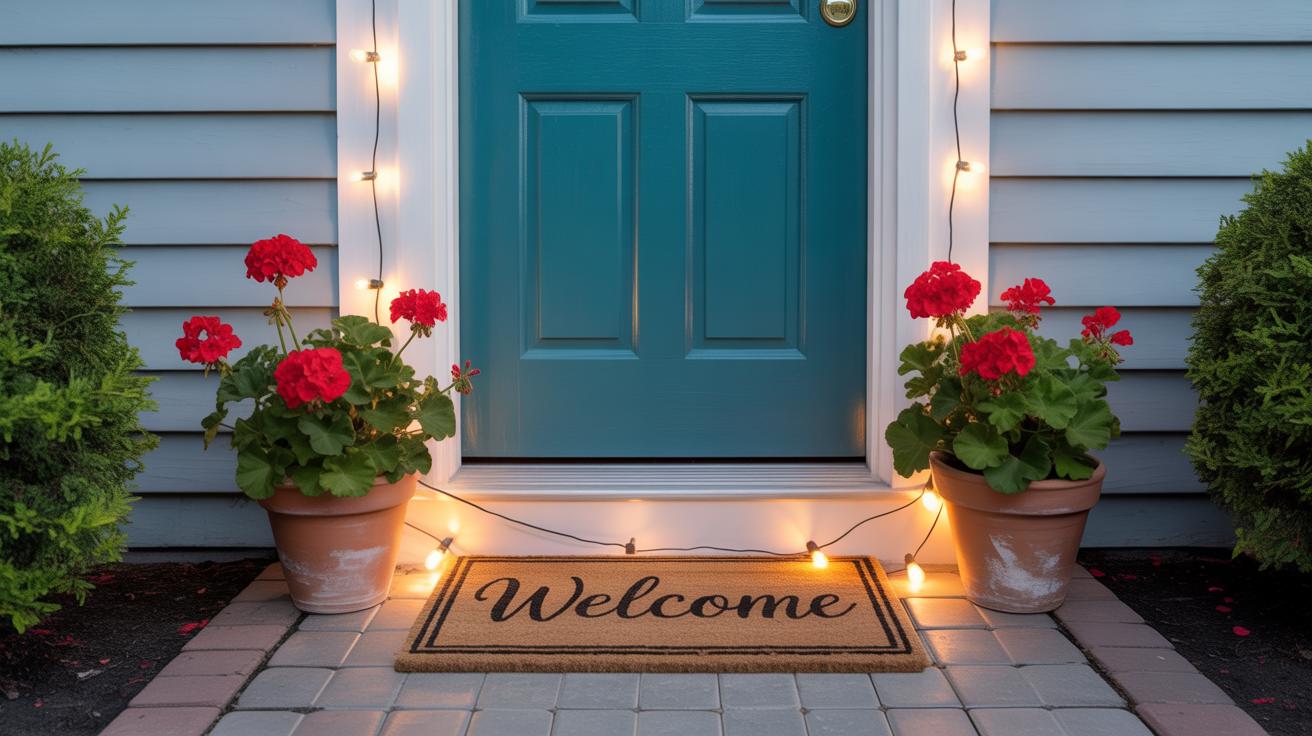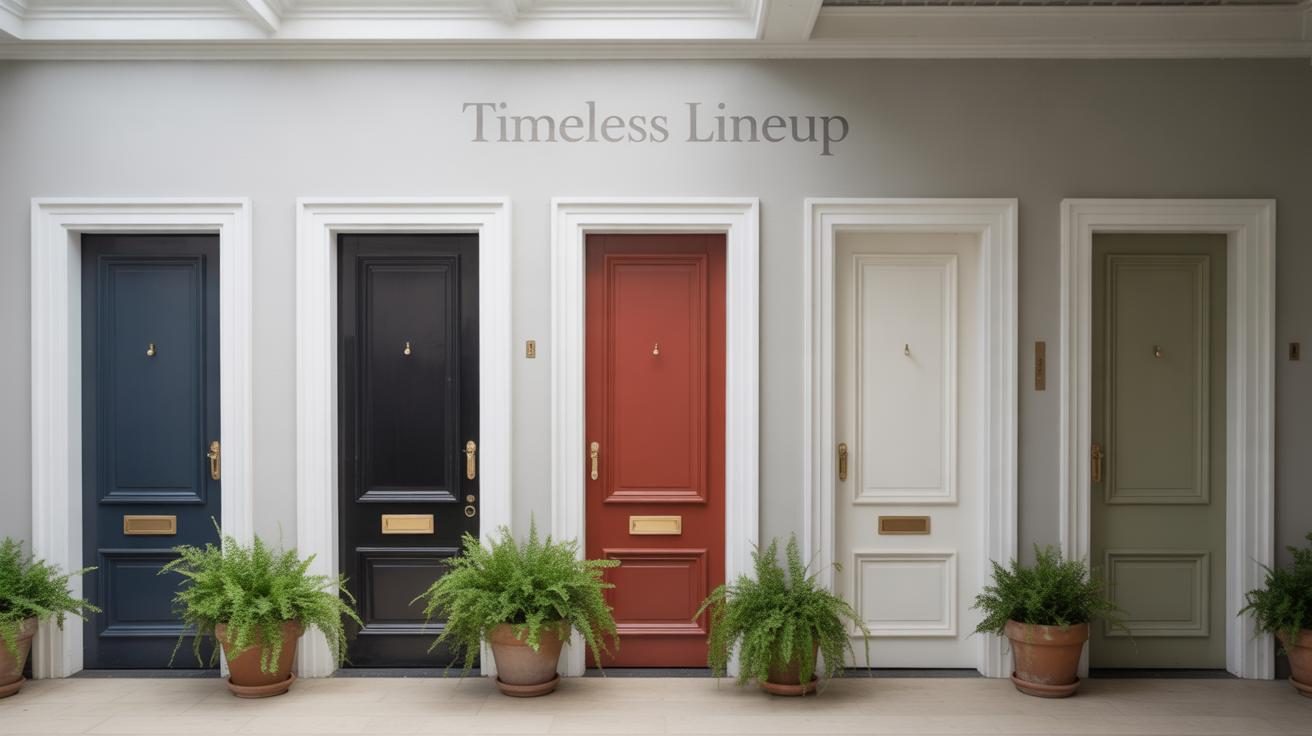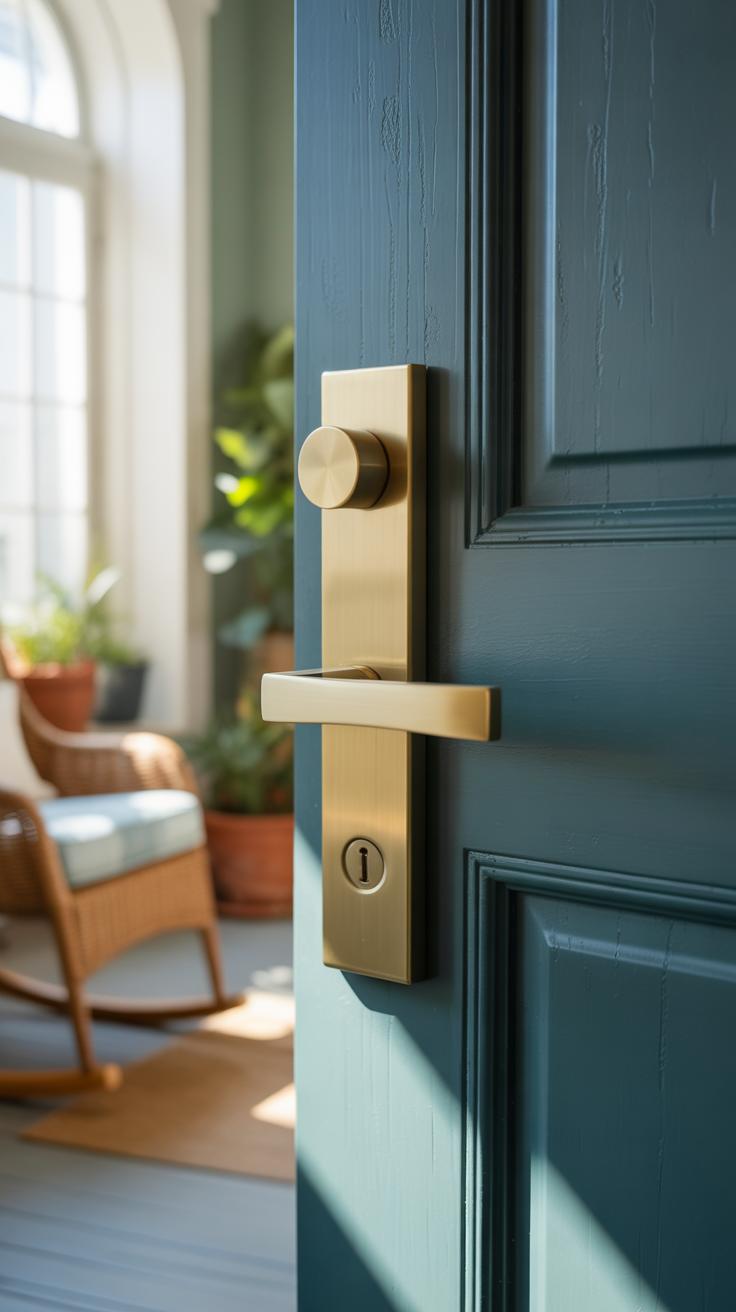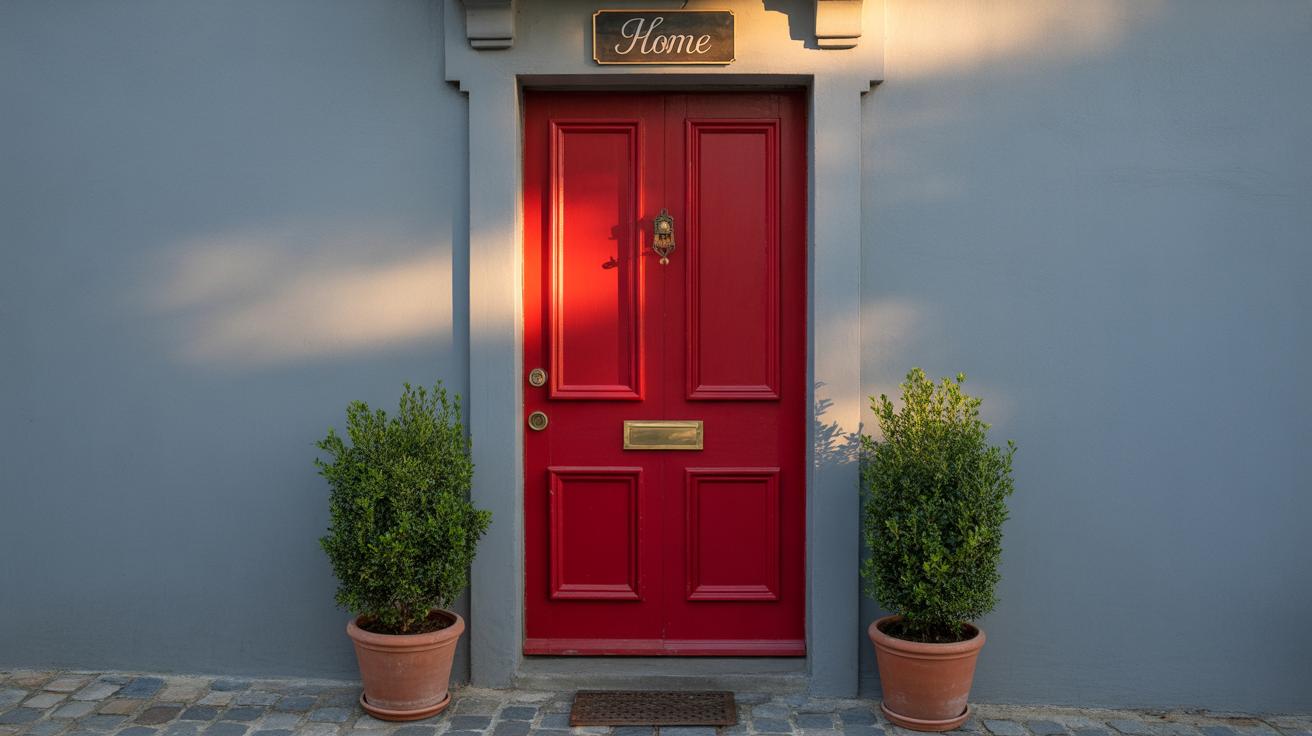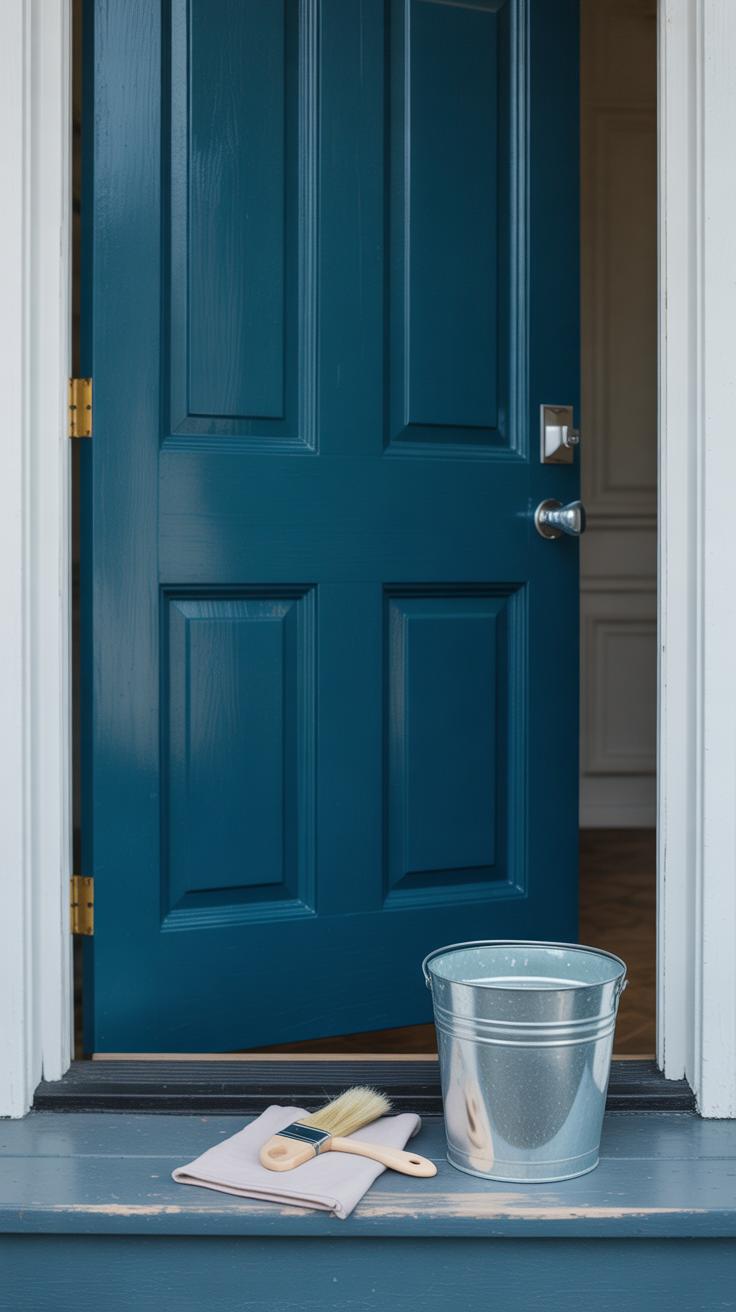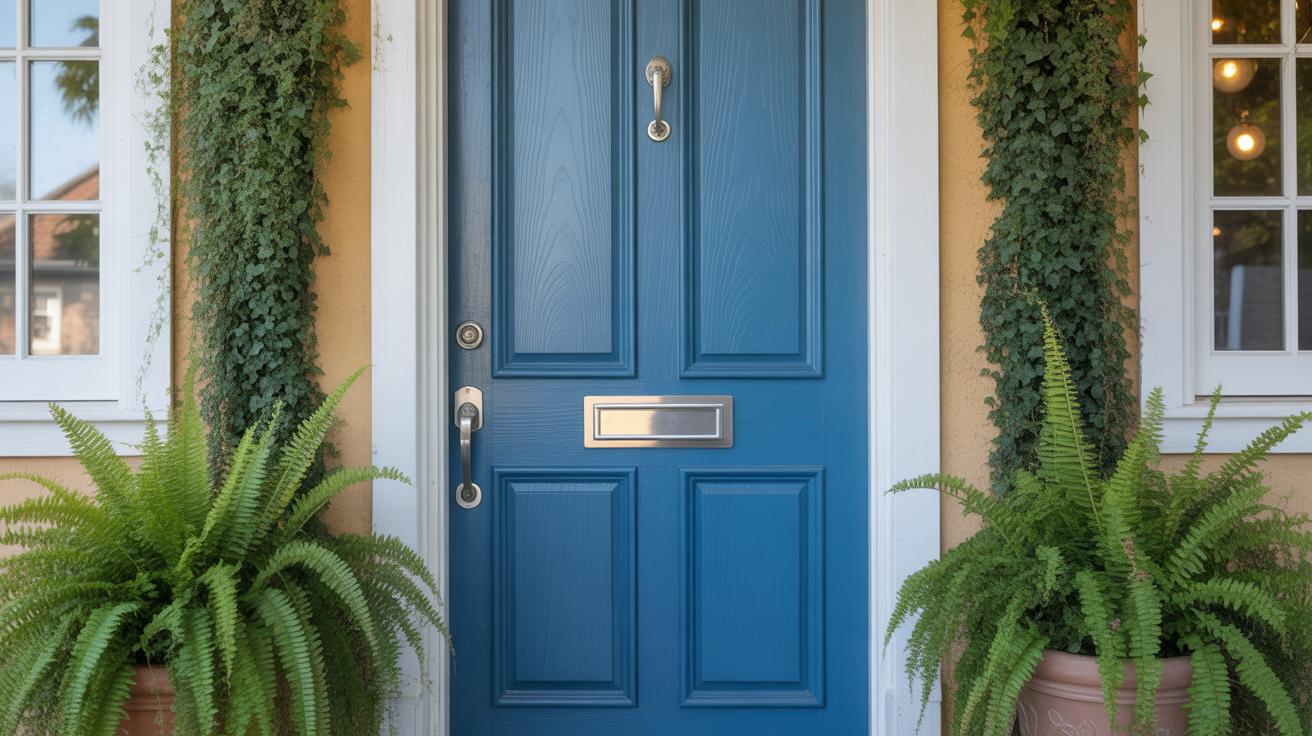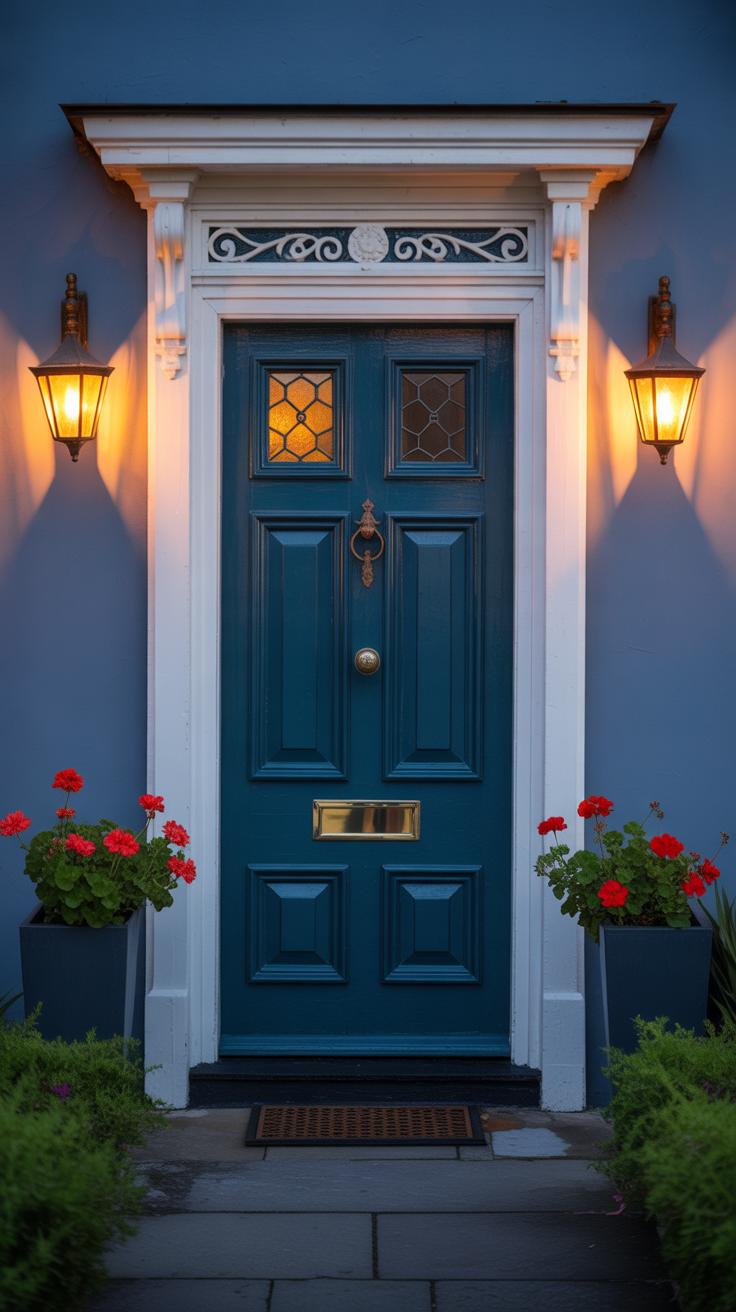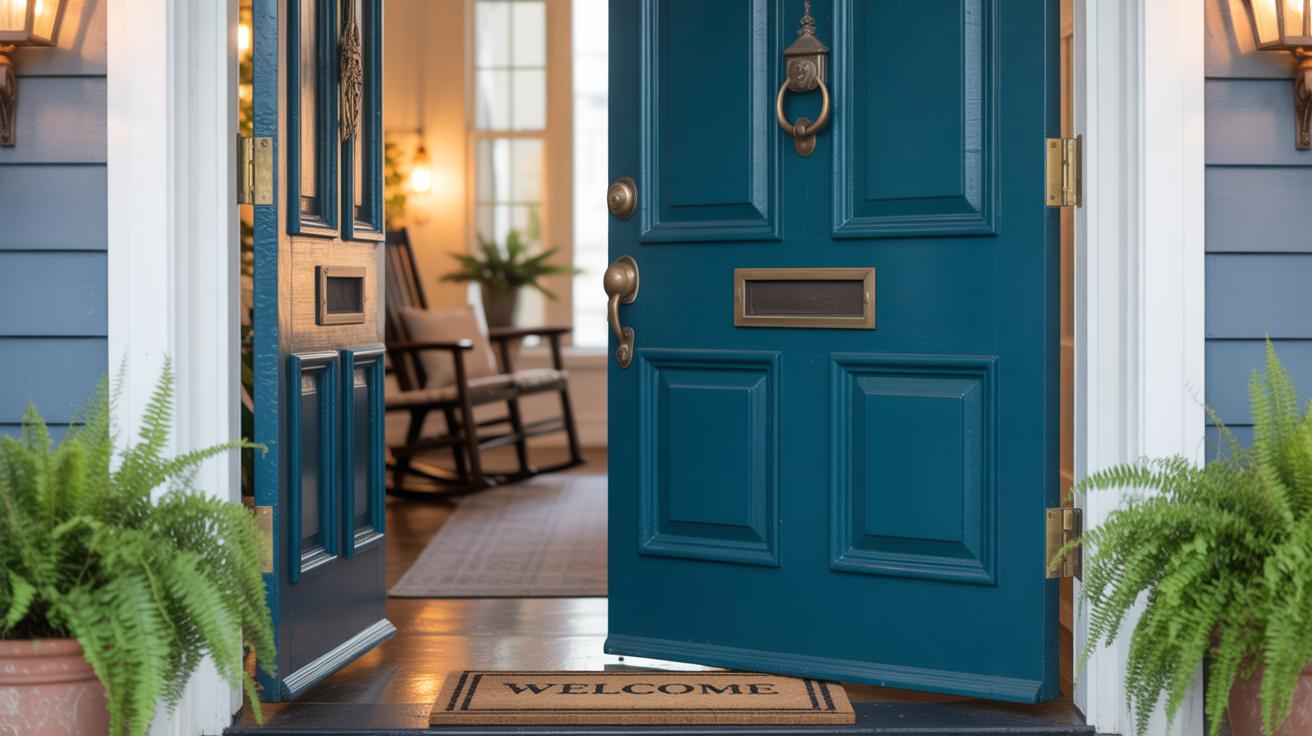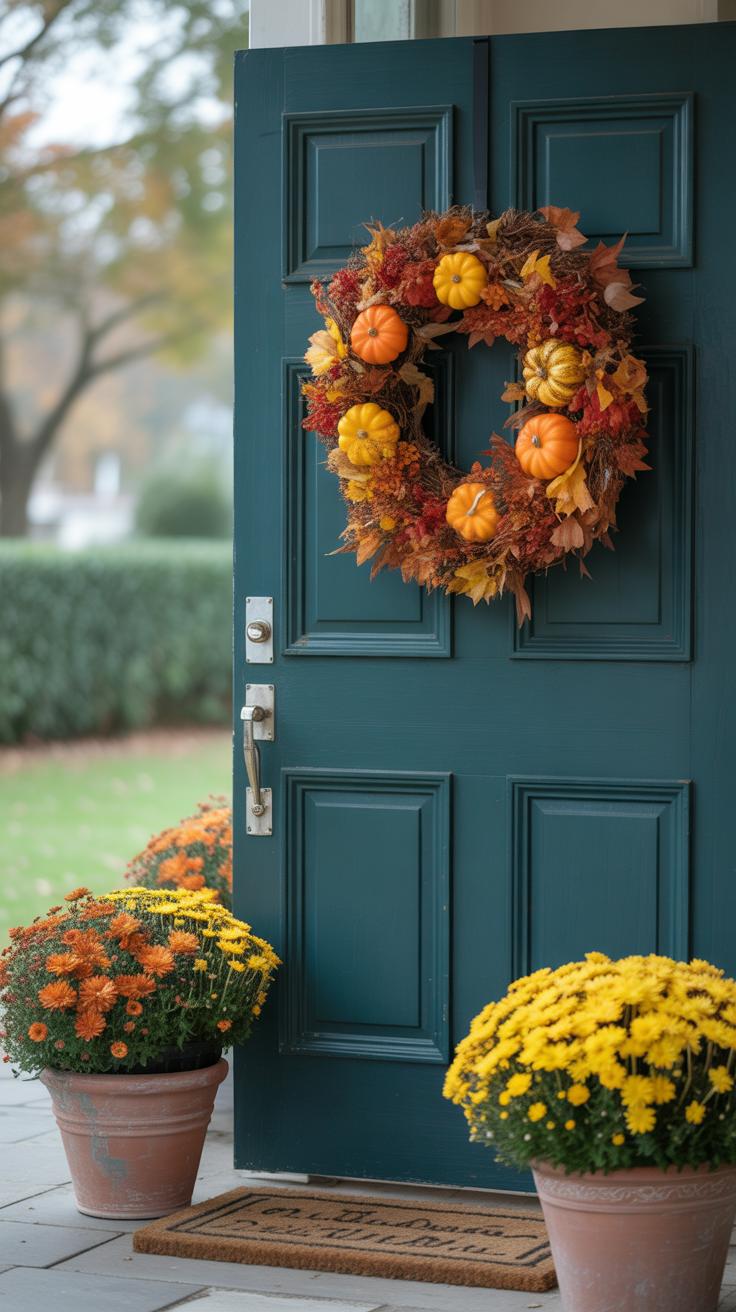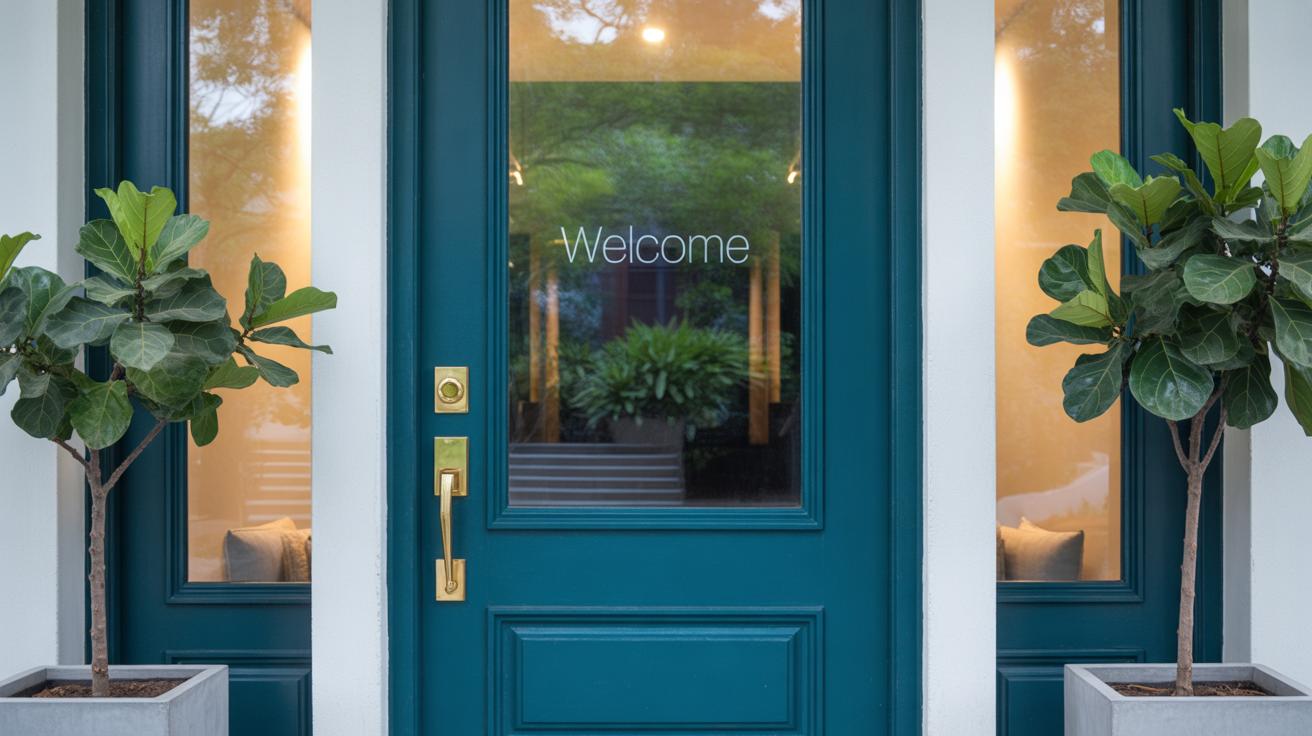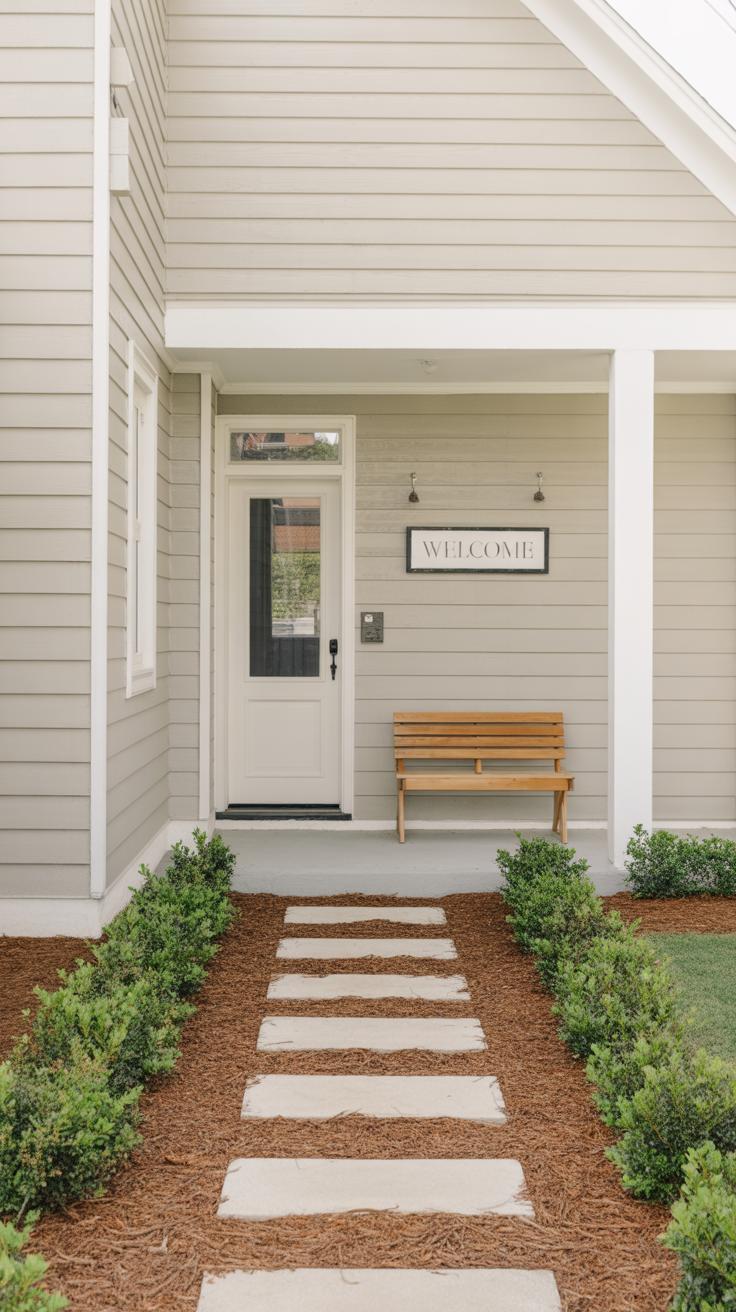Introduction
Your front door is a key part of your home’s first impression. It can say a lot about your style and welcome guests. Small changes to your front door can make your house look fresh and inviting, boosting its curb appeal.
This article explores simple, practical ideas for front doors. It covers style, color, hardware, and more, helping you find ways to improve your home’s entrance instantly. You can make your front door stand out without a big budget or major renovations.
Selecting the Right Front Door
Choosing a front door isn’t just about function—it’s about style and personality. When picking one for your home, think about the overall look you want to achieve and how the door material matches it. Wood doors offer a classic, warm feel, perfect for traditional or rustic houses. You get natural grain and color variation, which always looks rich but needs some upkeep. Fiberglass doors try to mimic wood’s appearance but come with less maintenance. They’re good if you want that look without worrying about cracks or warping. Steel doors are sleek and secure, often fitting modern or industrial homes. They handle weather well but might dent or chip over time.
Each material brings different perks:
- Wood: Traditional charm, great for authenticity, but you must protect it from moisture and pests.
- Fiberglass: Weather-resistant, less maintenance, and can look surprisingly real.
- Steel: Tough, secure, low maintenance, but less natural-looking.
If you’re unsure, it’s helpful to get samples or see doors in person to feel the texture and look. Also, think about how much time you want to spend on upkeep. Personally, I lean toward fiberglass for a mix of looks and ease, but wood has an unmatched character that fiberglass can’t fully replicate.
Consider the style of your home next. For example, a modern house usually looks best with simple, clean-lined doors—maybe steel or smooth fiberglass. A cottage might call for a wooden door with glass panes or decorative details. Colonial homes often handle classic paneled wood doors well, sometimes painted in a vivid color to add a bit of wow-factor on the street. Picture a crisp white colonial with a deep black paneled door—that traditional contrast just works.
Does the door style feel like a natural extension of your home’s personality? That’s the goal. Picking the door is as much about matching the architecture as about reflecting your style. In the end, it’s the door that sets the tone for what visitors—and you—will see every day.
Adding Color to Your Front Door
Painting your front door can make a surprisingly big impact on your home’s curb appeal. The right color can instantly draw attention, make the entrance feel inviting, or just add a fresh, clean look. Sometimes, a simple repaint can feel like a mini makeover without the fuss or cost of replacing the door.
When thinking about colors, you might want to go for something that pops—reds, navy blues, or even a deep green can create a striking focal point. These colors tend to stand out against neutral siding and create a welcoming vibe that catches people’s eyes. But maybe bold isn’t your style or doesn’t fit your neighborhood—then softer shades like warm beiges or subtle grays might actually feel more fitting. These tones can blend nicely with the existing exterior while still giving your door a neat, fresh look.
Different paint finishes play a key role, too. Glossy finishes give you that shiny, almost polished look but can show imperfections easily. Matte finishes create a subtle, muted look that hides small flaws but might be harder to clean. Satin is kind of the middle ground—not too shiny, not too flat, and it tends to be easier to wipe down. I’ve found satin to be the best for door paint because it balances looks and practicality pretty well.
Choosing Bold Versus Soft Colors
It can be tricky to decide between bright and soft colors for your front door. Bright colors like red, blue, or even yellow can say “look at me” and give your home a lively feel. Think about places where you want to express personality or make a statement. Sometimes, a bright door can even lift your mood when you come home.
But in some neighborhoods or with more traditional house colors, bold hues might feel out of place or too loud. Softer shades such as beige, off-white, or various grays often fit better here, creating harmony with the rest of the home and surrounding houses. For instance, a gray door on a brick house or a beige door on wood siding can feel understated but classy. It’s less about just following trends and more about what feels right for your location and your home’s style.
Do you want your front door to be the star, or should it blend in a little? There’s no perfect answer, but understanding your environment really helps.
Types of Paint Finishes
Choosing the right finish for your front door paint affects both its look and upkeep. Here are the basics:
- Matte: Flat and non-reflective, hides imperfections well but can be hard to clean if dirt builds up.
- Satin: Slightly shiny and soft, easier to clean than matte, balances durability with a smooth look.
- Gloss: Shiny and bright, stands out but shows scratches and dents more easily, and cleaning is a breeze.
From experience, satin tends to work best for most front doors because it gives a clean, pleasant look without being too flashy. Gloss is tempting if you want high shine and easy wipes, but it might feel a bit much or show flaws you don’t want to highlight.
Think about maintenance as much as aesthetic. If your door faces a busy street or harsh weather, a finish that cleans easily might save time and keep your door looking fresh for longer.
Installing Decorative Glass Panels
Adding glass panels to your front door can change your entryway’s vibe in ways you might not expect. The obvious upside is the extra light filtering inside—morning sun cutting through a frosted panel, or a soft glow from colored stained glass in the afternoon. It makes the whole area feel… lighter, more inviting. But it’s not just about brightness. Think about how these glass inserts can add a bit of personality, a nice touch of charm to an otherwise plain surface.
Of course, privacy often comes up here. You don’t want everyone peeking in, right? Luckily, there are several glass options:
- Frosted glass lets in natural light while blurring the view. Good for most front doors where privacy is a concern but you still want some daylight.
- Stained glass adds character and color, offering privacy with artistic flair. Perfect if you want to make a statement without compromising on discretion.
- Clear or textured glass works if you don’t mind more visibility or if your entry faces a less busy street.
Some doors come with small glass inserts, others have full panels—the choices really depend on your style and what you need. And beyond looks, safety glass options like tempered or laminated varieties can give peace of mind, and certain energy-efficient models even help with insulation, albeit in varying degrees. So, think about the balance between light, privacy, and security when picking the style.
You might wonder, “Would this really suit my home?” Well, try imagining your door with a simple rectangular frosted glass strip down the center or perhaps a cluster of small stained glass squares near the top. Sometimes small changes can set off a surprisingly warm welcome.
Updating Door Hardware
Swapping out old door hardware can change a door’s entire vibe. New handles, knockers, and house numbers don’t just add function—they give the entrance some personality. When choosing, think about finishes like matte black, aged brass, or satin nickel. These can either stand out or blend in quietly, depending on the look you want. I once replaced a dull brass door handle with a sleek black lever and it made the door feel more modern without a full overhaul.
When you select door handles, styles range widely—from the minimalist straight bars of modern designs to the curved elegance of classic knobs. There’s also the question of security and comfort. Lever handles are often easier to use and can be paired with smart locks, but traditional knobs sometimes provide a firmer grip—and a certain timeless charm. Your choice might boil down to how much you prioritize convenience versus style.
Don’t overlook decorative accessories that add character, like door knockers or mail slots. These can be subtle details that catch the eye and reflect your taste. Materials like brass and bronze age well, developing a patina that can feel more authentic over time. Stainless steel resists corrosion but might lack warmth. Even simple house numbers can feel customized when you select a distinctive font or finish. These small touches often matter a little more than you expect.
Maintaining Your Front Door
Keeping your front door looking fresh takes a little effort, but it pays off. Cleaning regularly is key—probably once a month works well, but if you notice dirt or grime sooner, don’t wait. Use mild soap with warm water and a soft cloth. Avoid harsh chemicals that might eat away at the paint or finish. For wood doors, a gentle wood cleaner might be better, something that won’t strip natural oils.
Checking for weather damage is something many forget until it’s too late. Look closely—peeling paint, cracks, warped edges, or swollen spots can tell you when the door is struggling against the elements. Fix these signs early. A fresh layer of paint or sealant keeps moisture out and blocks harmful UV rays. If the paint is chipped or faded, scraping off old layers before repainting makes a big difference, even though it’s extra work. Skipping prep usually backfires.
To protect your door from rain and cold, apply a good quality exterior sealant on all edges. For wood, this prevents swelling and rot. Metal doors might need rust-resistant primers before painting. Repainting every few years—maybe every 3 to 5—keeps your door sturdy and attractive. It’s a simple step but often overlooked until damage shows. So, taking time for maintenance could save you money and frustration down the road.
Incorporating Lighting Around Your Door
Lighting near your front door does more than just help you find your keys at night. It can really set the tone for your home’s whole exterior. When done right, it boosts curb appeal and makes your entrance feel inviting—plus it adds an extra layer of security. You may not think about it much, but good lighting can even influence how safe you feel coming home after dark.
There are a few types of lighting to consider. Wall sconces are a popular choice and they work well on either side of the door. They offer a balanced look but aren’t the only option. Overhead fixtures can create strong pools of light right above the door, which some people prefer if they want that spotlight effect. You might also think about recessed lights in the porch ceiling if you have one.
Fixture styles should reflect your door’s design. A sleek, modern door might call for minimalist fixtures with clean lines, while a rustic or traditional door could look better with lantern-style sconces. I’ve noticed that choosing LED bulbs saves energy and they last longer—something that you probably didn’t think about when picking fixtures. Soft white LEDs often feel warmer and more welcoming than cool white bulbs.
Where you place the lighting matters a lot. Lights flanking the door create symmetry and throw light where it’s needed most, revealing door details and your welcome mat. Overhead lights work well in covered entryways and shine down to illuminate the area directly beneath. Sometimes mixing both works best, especially if you want a layered effect. Positioning also affects shadows and glare—too much glare can feel harsh, too dim leaves potential safety gaps.
So, when thinking about lighting, ask yourself: Do you want more style, security, or both? Combining these different lighting types can be tricky, but it’s worth a little trial and error. In any case, lighting is one of those small changes that really pays off in the long run.
Adding Seasonal Decorations
Changing your front door’s look with seasonal decorations can be a quick way to refresh your home’s entrance throughout the year. It breaks the monotony and can even lift your mood when you come home. Think of it as a small ritual—switching things up to match the time of year. For instance, a simple autumn wreath with dried leaves and berries can make your door feel warm and inviting. In winter, maybe a green pine wreath with a red bow feels right, but not everyone loves that traditional look—you might prefer something with frosted branches or even a minimalist style.
Spring invites softer colors like pastel flowers or fresh greenery, while summer might call for something brighter, maybe a nautical theme or tropical plants. Small touches go a long way, and you don’t have to spend a lot or do too much.
Easy Seasonal Decoration Ideas
Some decorations are classic and easy to swap out:
- Wreaths: Tailor them to seasons—pumpkin accents for fall, light florals for spring, vibrant blooms for summer, simple evergreens for winter.
- Doormats: Changing your mat adds a fresh feel and can highlight holidays subtly—think snowflakes or flowers.
- Plants: Potted plants near the door can add life and color. Maybe mums in fall, pansies in spring, succulents for summer, and a small evergreen or holly bush in winter.
- Small decorative objects: A tasteful lantern in winter or a colorful ceramic piece in summer.
These pieces are easy to manage, and swapping them out won’t take much time or effort—but they do make a difference.
Keeping Decorations Simple and Smart
It’s tempting to go all out, but too much can feel messy or forced. I’ve seen doors with a clutter of decorations that distract more than welcome. Instead, pick one or two focal points and let those shine. Keep things balanced and don’t overcrowd the space. Refresh your decorations every few months or even weekly if it fits your rhythm. Fresh flowers wilt, ribbons fade, and colors lose their pop.
Besides, rotating your decorations regularly means they stay meaningful instead of becoming part of the scenery. When you keep it simple, you make a stronger impact—your front door feels cared for and intentional without overwhelming the eye.
Improving Door Surroundings
When thinking about your front door, don’t stop at the door itself. The area around it matters just as much, if not more, for making a strong first impression. A few touches to the surroundings can change the entire vibe.
Start with the plants near the entrance. Simple, low-maintenance options often work best if you don’t have a green thumb. Something like boxwoods or lavender can frame the door nicely—they’re tidy, don’t demand constant care, and add a subtle pop of color or texture. Also, flowering plants like geraniums or snapdragons can bring a bit of cheer without requiring much fuss. These can be planted in pots or directly in the ground, whichever suits your space and your commitment level.
Walkways play a quiet but crucial role in guiding visitors to your door. If yours is cracked or fading, refreshing it with new stones or even a simple gravel path could spark immediate appeal. A well-defined path invites people in and hints at the care inside. Don’t overlook lighting along the walkway for an extra touch—it can feel welcoming and safe, especially in the evenings.
Porch spaces often get ignored, but a bit of attention there can work wonders. Think about replacing a tired doormat with something fresh and inviting. Adding a small bench or a couple of chairs can make the porch feel like a space to pause, not just pass through. Even swapping out or painting the porch floor might change the story of your entry—whether it’s a crisp coat of paint or new tiles, it can invite a closer look and set a tone.
What about you—could a few simple changes around the door turn your entrance into something you’re actually excited about? It doesn’t have to be complicated, but it just might be worth the effort.
Conclusions
Improving your front door can change how your home looks on the outside. You can choose styles and colors that fit your home and personality. Adding new hardware and keeping your door clean adds to the effect.
With the ideas shared here, you can start making your front door a place that welcomes and impresses. Think about what fits your home best, and enjoy the new look and feel it brings to your curb appeal.

